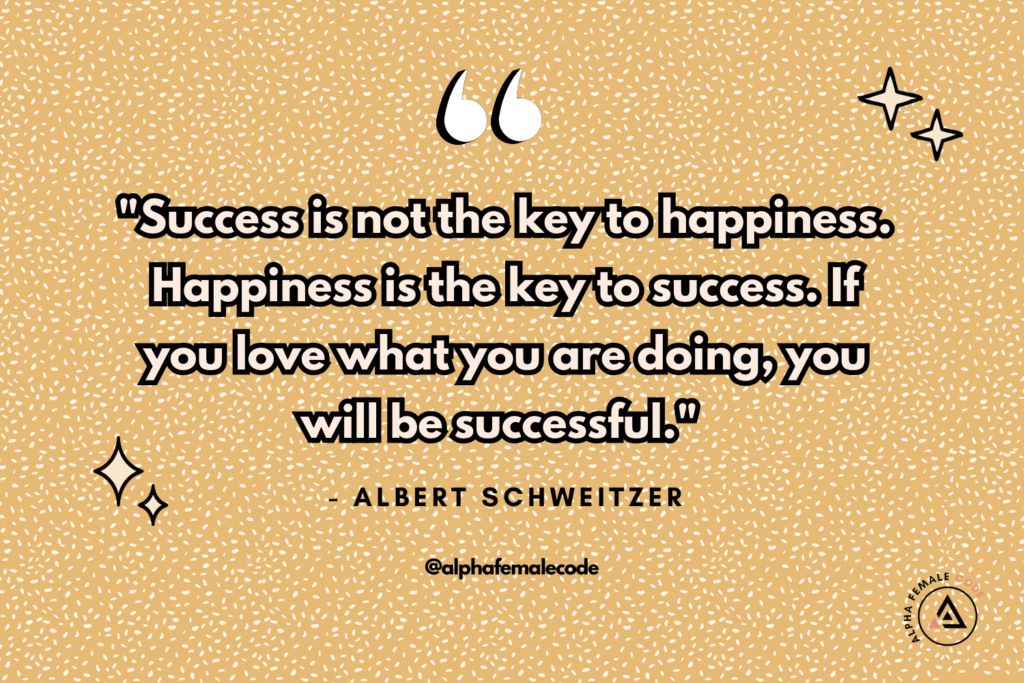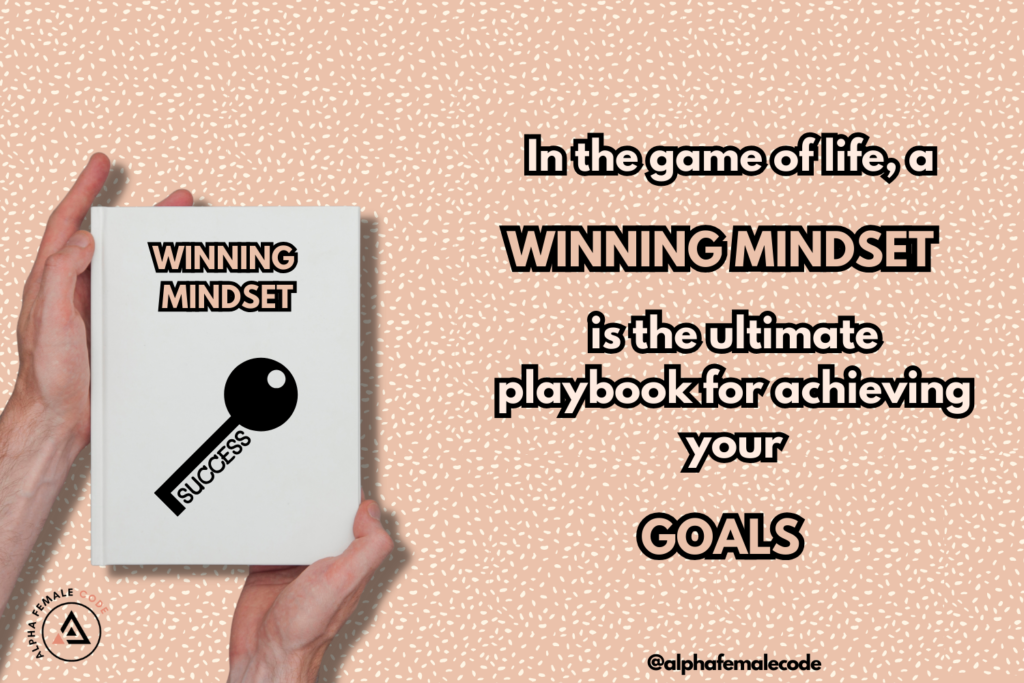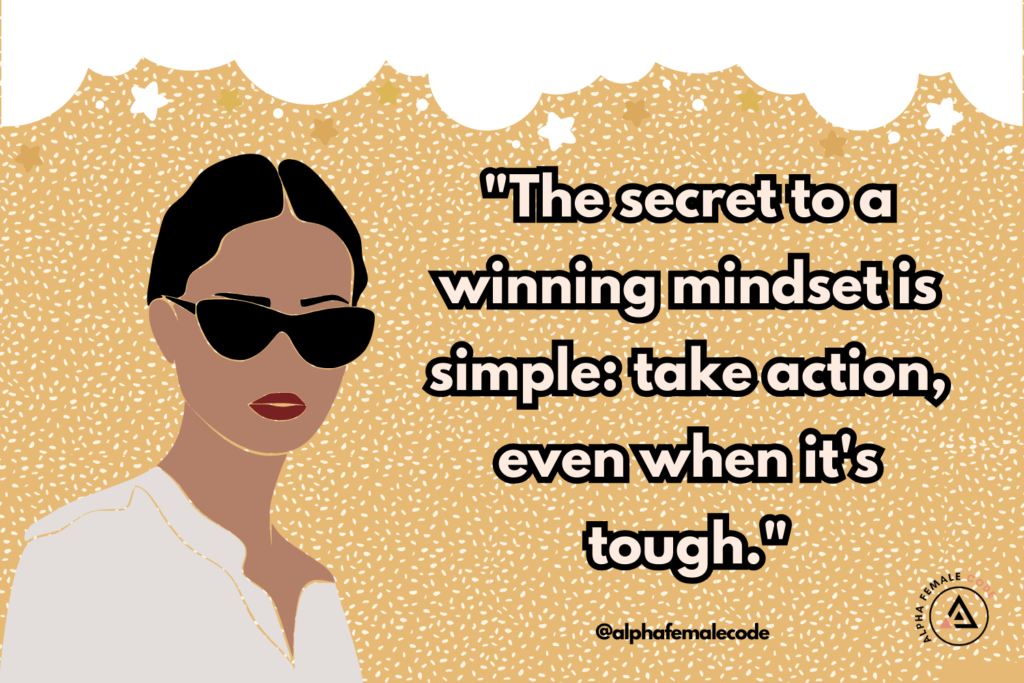
In the pursuit of success, resilience, and personal growth, there exists a fundamental element often overlooked – the mindset. A winning mindset is not a luxury but a necessity in today’s competitive landscape. It’s the driving force that separates those who endure from those who thrive.
The tips you’re about to explore are not empty promises; they are designed to rewire your thinking, fortify your resilience, and propel you forward in your pursuit of excellence.
By adopting these strategies, you are making a commitment to yourself, your goals, and your untapped potential.
1: Rewriting Your Mind’s Story: The Power of Self-Talk
“Elevate Your Self-Talk Game”
THE WHY – Why does positive self-talk matter?
Your internal dialogue is not inconsequential. In fact, it has a profound impact on shaping your mindset.
But it’s not just my word, science backs this up too. Studies have shown that our internal dialogue triggers an emotional response and that emotional response influences actions.
For example, negative self-talk triggers stress responses that impede cognitive functions and hinder decision-making. Whereas, positive self-talk can activate the brain’s reward centers, releasing neurochemicals that boost motivation and resilience.
All are pivotal for entrepreneurial success.
Now that we have covered the WHY it’s time to focus on the HOW!
THE HOW – How to embrace positive self-talk?
The first and most important thing to remember is that elevating your positive self-talk game involves conscious effort. It will require time as you fine-tune that internal narrative.
You also have to become self-aware so you begin to recognize when your self-talk turns self-critical or doubtful.
There are a number of actions you can take to begin to consciously change that narrative:
Exercise 1:
Replace vague or limiting phrases with specific, empowering language. For instance, replace “I can’t” with “I am working on” or “I will.
Exercise 2:
Introduce the word ‘yet’ into your self-talk vocabulary. Instead of “I don’t know how to do this,” adopt “I don’t know how to do this yet.”
Exercise 3:
When reflecting on your actions or decisions, provide a balanced analysis. Instead of chastising yourself for a mistake, offer feedback like, “I learned valuable lessons from this experience that will refine my approach next time.”

2: Embracing Failure as a Steppingstone
“Simple Hack of Failing Forward”
THE WHY -Why you should embrace failure?
Ok, this one might raise a few eyebrows but it’s a good one I promise so to stick with me.
Firstly, let’s set the record straight. Fear of failure is a very universal emotion and everyone, including entrepreneurs, experiences it at one time or another. It’s rooted in the primal desire for safety and the avoidance of negative outcomes.
For us, ambitious boss babes the stakes are high, and losses are great so naturally we fear failure. Not to mention that the failure is witnessed by friends, family, and the online world.
The thing is in many cases what we truly fear is exactly that – the external world witnessing our downfall. In some instances, this fear might hold you back from taking on opportunities where there is a risk of failure. Left unchecked, the fear of failure can morph into a self-fulfilling prophecy, stalling progress and potential.
That’s something we have got to change and yes you can change it with a few simple mindset shifts.
THE HOW – How to wear failure as a badge?
Simply put, “Failure Badge” is a way of reframing your mindset about failure. Instead of viewing it as a setback or something to be hidden or avoided, the Failure badge is all about wearing Failure as a badge of HONOUR!
It’s all about reframing your view of failure as a roadblock but instead viewing it as a vital component of growth that will eventually lead you to your dreams.
So how can you begin making the mindset switch?
First of all, acknowledge the emotion and accept it. Don’t avoid it. Embrace all of the uncomfortable feelings and bitterness that it brings with it.
Begin to change your narrative and remind yourself daily that failure is inevitable, especially the more risk you take and the more you step outside of your comfort zone.
Remember that the people who will judge you for any failure or mishaps that happen in your life are likely the ones who simply stay within their comforts and never step out to do something extraordinary. It’s very easy to not fail when you constantly choose to live within the bounds of comfort.
Therefore, it is time to wear failure as a badge of honor – a testament to your courage in taking risks.
Lastly, shift your focus from solely outcome-oriented thinking to the journey itself. Embrace the process of learning, evolving, and adapting.
3: Visualization with a Twist: Vision Boarding 2.0
THE WHY – Why creating a vision board can help you achieve your goals?
Vision boards are powerful as f…..
If you put your trust in this small hack of creating a vision board, you will in essence bridge the gap between imagination and achievement.
But that’s not all, as a neuroscientist I have to throw in my scientific two cents to the mix, and yes, science does support it.
In fact, it has been shown that your brain processes visualizations in a manner akin to real experiences. When you vividly imagine achieving a goal or an outcome the brain ignites neural pathways as if you were actually doing it or it was actually happening to you.
This process can actually rewire your brain (you might have heard of “neuroplasticity”), and this leads to feelings of confidence, motivation, and resilience. All the key ingredients of a winning mindset.
THE HOW- How to create a powerful vision board in 5 steps?
Step 1: Choose Your Canvas – Select a digital platform that aligns with your preferences and skills. This could range from dedicated vision board apps like “Vision Board” or “Hay House Vision Board” to graphic design software such as Canva or Adobe Spark.
Step 2: Define Your Intentions – The clearer your intentions, the more effective your dynamic digital vision board will be in guiding your mindset transformation.
Step 3: Arrange and Design – Begin arranging your collected visuals on the digital canvas.
Step 4: Craft Compelling Affirmations – Pair each visual element with a concise, impactful affirmation.
Step 5: Mood Board Meets Vision Board: Infuse your vision board with a specific mood. Use images, colors, and typography that collectively evoke a particular emotion, like confidence, or excitement.

4: The Art of ‘No’: Boundary-Setting for Success
“No-Nonsense Boundaries: A Winning Approach”
THE WHY – Why it is vital you set boundaries?
When speaking about entrepreneurship we tend to focus on embracing opportunities, and always saying YES!
But an important skill is to find the right balance and know when to say YES and when to set a boundary and draw a hard NO!
Setting boundaries can feel like a foreign concept when you are not used to it. You might feel like you are doing something wrong, letting people down, or even guilty at the prospect.
However, they are a necessity for success because they shield you from overexertion, burnout, and distractions.
Boundaries act as protective walls around your time, energy, and focus, safeguarding your mental and emotional well-being.
By asserting healthy boundaries, you reclaim control over your time and energy, enabling you to channel them effectively toward your goals.
THE HOW – How can you set boundaries in a respectful way?
This is probably a very cliche thing to say but it also stands true – setting boundaries allows you to be the best version of yourself and to protect your sense of self and your energy. You might feel like you are doing a disservice to others when in fact you are putting yourself in a position where you have more to give!
Even so, setting boundaries is still hard. But there is a way to do it with grace, in a way that leaves you feeling aligned and empowered and the person on the receiving end, respected.
Effective boundary communication isn’t about building walls; it’s about creating bridges of understanding and respect.
Before communicating boundaries, it’s crucial to be clear about what they are. Take time for self-reflection to understand your limits and values.
Clarity is crucial, but you can maintain gentleness in your tone and demeanor. Avoid being overly aggressive or apologetic. State your boundaries firmly and calmly.
Acknowledging the other person’s viewpoint is a powerful way to communicate with grace. Say something like, “I understand where you’re coming from, but I need to set this boundary for myself.”
Put yourself in the other person’s shoes. Understanding their feelings and perspectives can make your boundary-setting more compassionate.
Rather than issuing ultimatums, communicate consequences. Explain what actions you’ll take if your boundaries aren’t respected. This approach is more constructive and less confrontational.
5: Gratitude Amplification: Your Success Journal
THE WHY – Why gratitude will elevate your success?
A winning mindset is one that can persevere through the peaks and troughs of life.
One of the best ways to build and maintain perseverance even in the toughest moments is to practice gratitude.
Gratitude is the art of acknowledging and appreciating the positives in our lives, no matter how small or seemingly insignificant.
Here are the 5 things you can expect when you begin practicing gratitude on a regular basis:
- Resilience Booster
- Positive Attitude Amplifier
- Mindful Awareness
- Elevated Self-Esteem
- Stress Reduction
THE HOW – How to practice gratitude to amplify your success?
1. Gratitude Journaling: Regularly jot down things you’re grateful for. This practice anchors your mindset in positivity and helps you acknowledge the small victories.
2. Morning Gratitude Rituals: Start your day by listing a few things you’re grateful for. This sets a positive tone for the day and shapes your mindset from the outset.
3. Mindful Appreciation: In challenging moments, consciously seek out aspects you can be grateful for. This shifts your focus from problems to solutions.

6: Celebrating Small Wins
“Small Wins, Big Impact: The Secret to Consistent Motivation”
THE WHY -Why you should always celebrate the small wins?
More often than not, it is the accumulation of small wins over time that eventually leads to achieving a goal.
But before you reach your goals, appreciating the small victories along the way can be difficult. You might end up overlooking the incredible progress you are making, leading to discouragement and a lack of motivation to continue.
Celebrating small wins reinforces positive behaviors and progress. It’s like a pat on the back from your inner cheerleader, motivating you to keep going.
THE HOW – How to learn to celebrate your small wins?
It is important to make time to acknowledge them. Pause to recognize when you’ve achieved a small win. Take a moment to reflect on the effort and dedication that led to it.
Treat yourself to a small reward. It could be as simple as a favorite snack, a short break, or a leisurely walk. This will reinforce the experience.
Keep a journal of your small wins. Writing them down provides a visual record of your progress and a source of motivation during challenging times.
1. Celebrate Daily Triumphs: At the end of each day, reflect on your accomplishments—no matter how small—and jot them down on a note. It could be completing a task, learning something new, or overcoming a challenge.
2. Deposit Your Notes: Fold the notes and place them in your “Success Jar.” As the jar fills, witness your journey’s tapestry of accomplishments growing.
3. Reflect Regularly: Periodically revisit the notes in your “Success Jar.” Witness the collection of small victories that have contributed to your overall progress.
7: Mastering Stress and Resilience
“Stress-Busting Strategies: Building Resilience for Success”
THE WHY – Why it’s important to manage stress?
Stress, if left unmanaged, can corrode even the strongest mindset. It clouds clarity, dampens enthusiasm, and saps your energy.
Recognizing its potential to derail progress is the first step to safeguarding your mindset.
Just remember, despite the ups and downs of entrepreneurship and the stress along the journey, your response to the demands is well within your control.
THE HOW – How can you manage stress effectively?
Here are a few ways you can manage stress.
By integrating these stress management strategies into your daily routine, you create more resilience.
Time Management: Implement time-blocking, the Pomodoro technique, or the Eisenhower Matrix to structure your day effectively. These methods help prevent overwhelm and improve focus.
Physical Activity: Engaging in regular physical activity releases endorphins—nature’s stress relievers. Exercise not only enhances your physical health but also contributes to mental clarity.
Mindfulness Meditation: This practice cultivates awareness of the present moment, distancing you from stressors. It encourages a non-judgmental observation of your thoughts and feelings, fostering a calm and centered mindset.
Deep Breathing Exercises: Deep, controlled breathing triggers the relaxation response, reducing stress hormones. Incorporate techniques like diaphragmatic breathing or the 4-7-8 technique to soothe your mind.

8: Reflecting on Progress: Mindset Check-ins
“Mindset Milestones: Regular Check-ins for Success”
THE WHY – Why are regular check-ins important for a winning mindset?
Putting time aside to regularly reflect on where your head is at and the state of your mindset can be a powerful way of ensuring you maintain the winning mindset.
These regular reflections are like calibrations, ensuring you stay aligned with your goals and aspirations.
THE HOW – Guided Prompts for a Meaningful Mindset Check-in
1. Current State Assessment: Begin by assessing your current mindset. How would you describe your overall attitude and perspective? Are there any recurring thoughts or emotions that stand out?
2. Goal Alignment: Reflect on your short-term and long-term goals. How aligned is your current mindset with these aspirations? Are there areas where your mindset could better support your goals?
3. Resilience and Adaptability: Consider recent challenges and setbacks. How did your mindset influence your response? Did you approach these situations with resilience and adaptability, or were there areas for improvement?
4. Mindset Triggers: Identify situations, people, or circumstances that trigger negative shifts in your mindset. How can you navigate these triggers more effectively and maintain a resilient mindset?
5. Future Focus: Envision your ideal mindset for the upcoming weeks or months. What qualities and attitudes do you want to cultivate? How will this mindset support your entrepreneurial endeavors?
